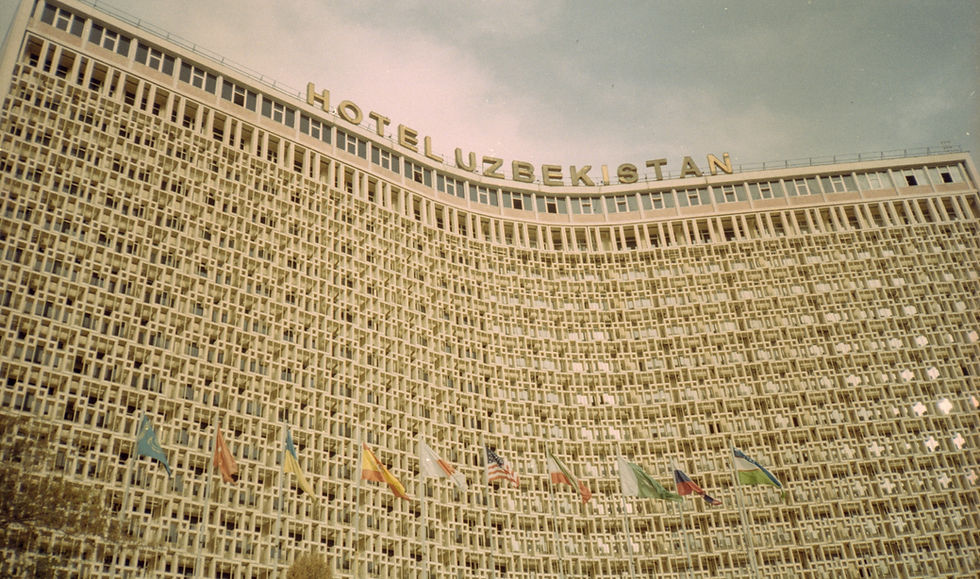Piața Romană: Communist Bucharest’s Best-Kept Secret
- Caravan Media Travels

- Sep 10
- 3 min read
Between the mid-1960s and 1989, Romania lived under the rule of Nicolae Ceaușescu. In the early days, Romania’s leader teased a more liberal agenda, slightly easing press censorship and denouncing the Soviet-led Warsaw Pact invasion of Czechoslovakia in 1968.

However, before long, Ceaușescu’s carefully manicured cult of personality regime grew to embody the most maniacal, violent and all-consuming totalitarian system that only Enver Hoxha’s Albania could even attempt to hold a torch to. Terrifying in its scale, delusion and brutality, Ceaușescu, and his wife, Elena ruled by erratic decree, systemically driving the population into despair with disastrous economic policies, large-scale secret police repression against the population and empty supermarket shelves, all while maintaining a prolific theatre-style propaganda machine comparable with that of Stalin or Mao. Ceaușescu’s intellectual “service” to Communist ideals was framed as a source of national achievement by the nation’s loyal media, while his people starved.

Nowhere is Ceaușescu’s maniacal legacy more present than in the architecture still standing in Bucharest today. The Palace of Parliament - or Ceaușescu Palace in the centre of the capital is a prime example. To this day, the colossal vanity project remains the heaviest building in the world, weighing over 5 million metric tons. Officials bulldozed entire neighborhoods, destroying communities, historic churches and synagogues, and much of Bucharest’s traditional Old Town history in order to build it.

Some rooms are over half the size of football pitches, where walls were draped with portraits of the country’s power couple. Nowadays, the palace is used as the Romanian parliament. Even with such a vital role, only around one third of the rooms are filled - whilst many are still undergoing renovation works. The sheer scale of the palace has to be seen to be believed, and perfectly sums up the insanity of Ceaușescu’s rule.

Piața Romană metro station, located in the north of the city centre, below the busy ‘Roman Square’ represents a much more modest but nonetheless intriguing architectural vision of the time; with a quirky backstory. Plans to construct the city’s second metro line (M2) were prepared in 1985 and presented to Elena Ceaușescu, the somewhat failed scientist with little to no expertise, who criticised the project on the basis of the population becoming “too overweight”. She decided that too many new stations were planned, and that locals should simply walk more - in order to lose a bit of weight. Logical.

After receiving orders from the Communist Party’s top brass to remove at least one station, engineers instead started preparing for work on the Piața Romană site în secret. Due to the importance of discretion, the scale of the station had to be limited.

As a result, the platforms in this beautiful dimly-lit city centre station are less than 1-metre wide. The station is a dark cavernous space where light is sparse and distributed unevenly. Cracked tiles, graffiti, and small portal-esque windows dot the corridors. The small platforms, seemingly almost an afterthought in the station's hollow expanse, seem detached from their surroundings. Pools of artificial light highlight their edges, while the surrounding darkness swallows the details of the station’s rough, worn walls - creating an effect of the short platforms floating in the infinite darkness of this subterranean world, illuminated only by the meek flicker of the dim utilitarian lighting overhead.

Engineers built thick concrete walls to conceal the tracks of the station from party officials. When the rest of the M2 line was opened in 1987, trains roared past the invisible station without stopping. But, once word got out that a perfectly usable metro station had been secretly built in the middle of the city, locals unsurprisingly called for it to be instituted. In the winter of 1988, the mystery station was officially opened. Roughly one year later, Nicolae Ceaușescu and his wife Elena were arrested while trying to flee the Romanian Revolution. Before long, following a televised and pre-determined trial, they were executed by firing squad for charges including the genocide of over 60,000 people.






Comments